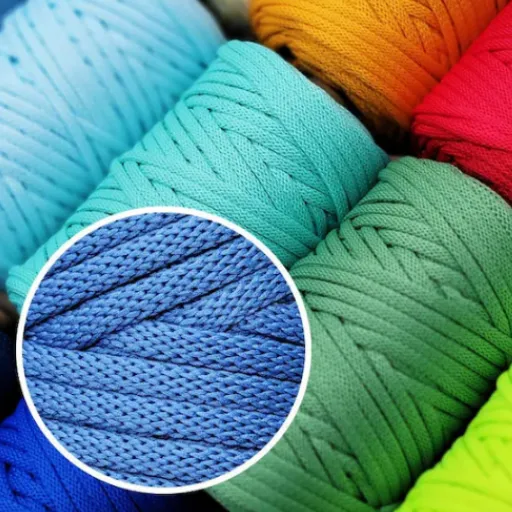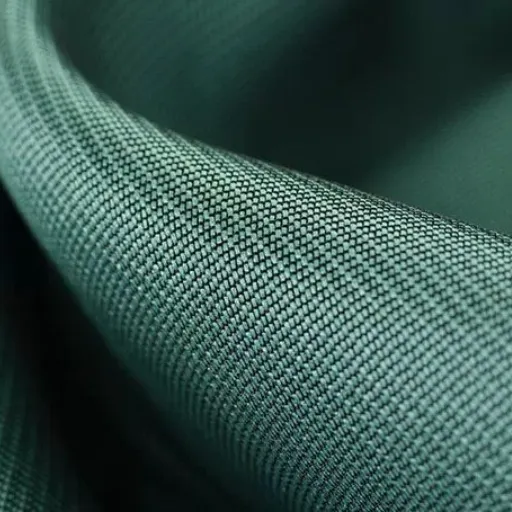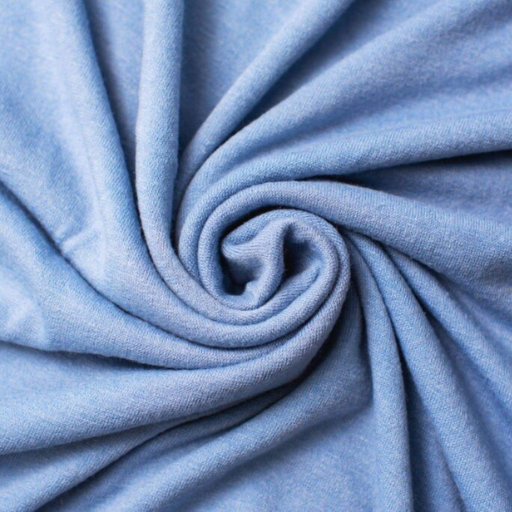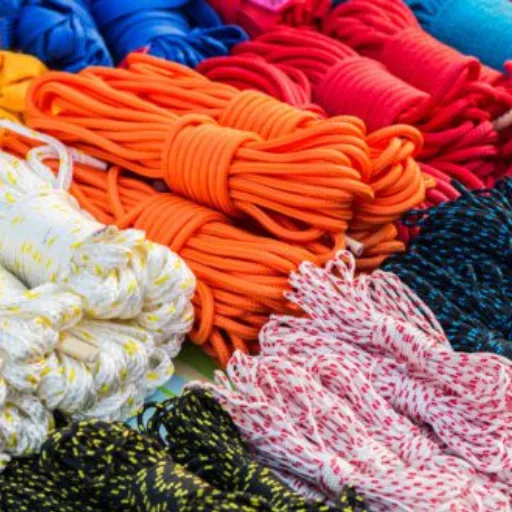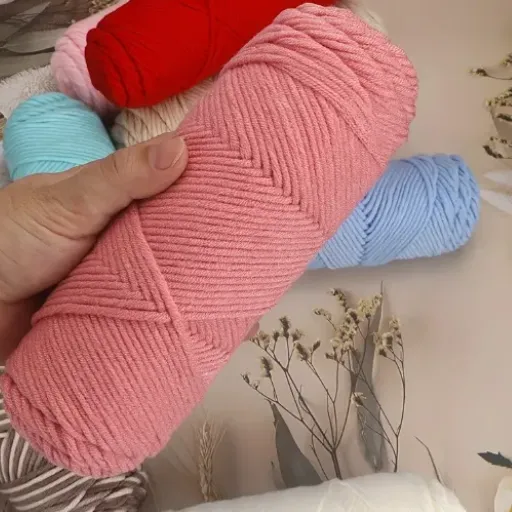Though both acrylic and polyester are found in almost every composition chart for synthetic fabrics, they vastly differ in their actual purpose. Being aware of the pros and cons of these synthetic yarns can be pivotal in the buying process-whether it is apparel or upholstery needles and yarns for crafting. This blog article explores the major differences between acrylic and polyester fabrics, with respect to composition, durability, touch, and ideal use cases. By the time you are through, you will be abundantly clear on which fabric would satisfy your requirements in a variety of instances and thus help you in a more conscious choice of your next material purchase or project.
Introduction to Synthetic Fabrics

What are Acrylic and Polyester?
Both are synthetics fashioned from petroleum-based chemicals, manufactured by designers to simulate the qualities of natural fibers. Acrylic is mostly made from the kind of polymer called polyacrylonitrile and is felt to be woolly in touch; it is hence used for crafting warm apparel such as sweaters and blankets. Being lightweight and soft, and good against color fading, acrylic finds extensive home and fashion uses.
The polyester counterpart is made from synthetic polymers created from a chemical reaction between alcohols and acids, mainly polyethylene terephthalate (PET). Polyester fabric is strong, withstands wrinkling, and will not lose its shape during wear. Hence it is heavily used in apparel for technical purposes. Contrary to acrylic, polyester has sharper finishes and is frequently blended with other materials to mitigate comfort concerns.
Key Insight: Being synthetic fabrics, the important differences between acrylic and polyester are currently in their texture, breathability, and strength. Acrylic may feel softer and warmer, but it gets less durable over the years, whereas polyester is famed for its toughness and versatility. Choosing between the two generally depends on specifics such as the desired texture and climate suitability and use of the fabric.
Synthetic Yarn: An Overview
Synthetic yarn is crucial to the textile industry, priced slightly lower, but also offering multiple performances for varied applications. These yarns are created from petroleum polymers and subjected to complicated manufacturing processes, rendering them highly suitable to meet diverse demands. Their advantage above natural fibers would lie in certain properties they do share, but synthetic ones are made stronger, water-resistant, and easy to care for.
Acrylic, polyester, and nylon are a few examples of the synthetic yarns most commonly used. Often, acrylics are considered to be the softest ones in general, having a wool-like feel that becomes a preferred choice for knitted apparel and blankets. Some say they might not really last long, particularly when compared with other choices. Polyester yarns are strong, do not wrinkle, and stay in shape, so they are employed in garments for everyday wear and textiles for the home. Nylon offers another grade of elasticity and strength, usually applied to products needing flexibility, like those for sports.
Depending on synthetic yarn selection, factors such as given applications, climate suitability, and desired characteristics, such as softness, durability, or moisture-wicking ability, are kept in mind. With resultant loss in the workability of synthetic yarns, there remain those that satisfy the specific functions and aesthetic desires combining economy with practicality.
Common Applications of Acrylic and Polyester
Being durable, versatile, and cost-effective, acrylic and polyester find wide applications in various fields. Here is an elaborate list of common uses of these fibers together with some newer insights and data:
- Textile Industry: Acrylic is often used in winter clothes such as sweaters, scarves, and gloves beyond the texture of woolly softness and warmth. Polyester is mainly seen in sports and activewear opportunities, however, because it wicks moisture from the skin and dries very fast. Recent studies show that globally, polyester accounts for roughly 52% of fiber production, hence being the world’s most dominant fiber (Statista, 2023).
- Home Furnishing: Acrylic and polyester fibers speak for upholstery, curtains, and rugs. Acrylic fibers provide glorious color retention and uphold the resistance to fading for that outdoor furniture. Polyester fabric is famously wrinkle-resistant, has been the gracing fabric for sills, bed linens, and cushions.
- In Automobiles and Industry: Polyester in heavy-duty automotive applications for seat covers, belts, and airbags that are strong and resilient. Acrylic can be used largely in industrial applications where project-oriented lightweight alternatives to glass can be afforded that have shatter limits. For example, in signage or acrylic sheets used in design and construction.
- Recreational and Outdoor Equipment: With the ever-increasing outdoor recreations, polyester is used in tents, backpacks, and other gear because of weather- and wear-resistance. Acrylics find their niches for awnings and outdoor canopies due to their UV resistance and crushing longevity.
- For Art and Craft: Acrylic is a favorite among the creative and craft fields for yarn production used for knitting and crochet, as well as acrylic painting. This versatility has contributed to its increased use among hobbyists and artisans.
An understanding of the characteristic properties and common uses of the two synthetic polymers acrylic and polyester can allow industries to make informed decisions along lines of function, aesthetics, and sustainability.
Chemical Composition of Acrylic and Polyester
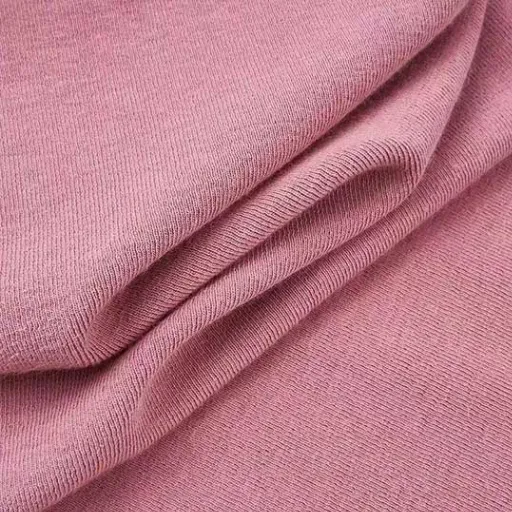
Understanding Polymer Structures
Acrylic and polyester are synthetic polymers, so the molecules themselves are chained into a repeating molecular pattern. Acrylic-type polymers come about with acrylonitrile that polymerizes into strong, lightweight, and weather-resistant substances. These properties include the making of acrylic for outdoor textiles and binders for paints.
Polyester is mostly made by reacting a diacid, such as terephthalic acid, with a diol, such as ethylene glycol, to give polymer chains that make a tough material resistant to stretching and easy to dye. In effect, these properties led to the use of polyester for apparel, upholstery, and industrial fabrics.
Polyester and acrylic may be considered families when it comes to durability and ability to be adapted to different characteristics. Essentially with different properties, things will be treated differently in terms of performance. Warmth and lightweight are attributes that crystallize acrylic in fabrics, whereas strength, resistance to wrinkles, and abrasion are considered applications for polyester in high-performance, high-longevity uses. These concepts must be grasped for a more fitting selection of materials against the specific needs.
Manufacturing Processes of Acrylic and Polyester
The chemical nature defining the two processes renders both synthetic in nature. Acrylic is derived from the polymerization of acrylonitrile, which itself is a petroleum and natural gas derivative. The procedure involves polymerizing acrylonitrile with other monomers to produce a polymer, which is then spun into the fiber by employing a wet or dry spinning method. The spinning action imparts quality to the fiber in terms of its strength and versatility so that it can be used in applications like fabrics or industrial materials.
On the other hand, the polyester production begins with the polymerization of purified terephthalic acid (PTA) and ethylene glycol, which are both petrochemical derivatives. During melt spinning, the polymer is heated and extruded into continuous filaments that can be woven or knitted into fabrics. This process is responsible for the polymer’s high strength and its resistance to shrinking and wrinkling, making polyester an all-purpose material that is used across many industries.
Both substances highly depend on petrochemicals and so are very energy-intensive to produce. Some of the environmental issues have, however, encouraged relative developments in the recycling of polyesters by mechanical and chemical processes. Meanwhile, others are researching more sustainable approaches to acrylic production. Getting an understanding of these manufacturing processes clues in on the pros and cons of each material so industries or consumers can make an informed choice.
Key Differences in Chemical Properties
Polyesters and acrylics have very different chemical structures, which greatly dictate the differences they have in terms of properties and application. It is composed of esters from the reaction of alcohols and acids, with the Polyester structure giving it strength and durability, which are important for stretching and shrinking forces these materials may face. They possess thermal and chemical stability, which makes it a suitable candidate for a variety of textile and industrial applications.
As far as acrylics are concerned, these are the polymers obtained from acrylic acid and its derivatives. The chemical structure confers a lightweight yet flexible character with excellent resistance to ultraviolet light and weathering, thus perfect for outdoor uses. However, in terms of physical stresses such as abrasion or heavy-duty use, they do not resist as well as polyesters and get their lowest melting point compared to polyesters.
Generally speaking, polyester is distinguished by durability and high-performance versatility, whereas acrylics are noted for lightweight flexibility and weather resistance. The other properties can then be used to guide the selection of the right material for many applications since there are always tradeoffs in environmental impact, finance, or functionality.
Physical Properties of Acrylic and Polyester Fabrics

Durability and Strength
Both acrylics and polyesters are very durable and strong fabric types, so they find applications on many fronts. Polyester, more so than any other, is famous for its extraordinary strength and its resistance to stretching, shrinking, and abrading processes. It maintains and retains its form even with usage being consistent, and thus, it is commonly sold as a fabric with high levels of use absorption, e.g., heavy-duty outdoor wear and industrial textiles.
Not quite in strong as polyester, acrylic instead has the durability that will suffice in those applications willing to place a high premium on fabrics that are flexible and lightweight. An acrylic fabric resists wrinkling and shrinkage, maintaining its smoothness over time. This polymer fabric is highly resistant to environmental agents such as UV and moisture, so it can be adequately deployed to outdoors or on items under prolonged sunlight exposure.
Our two have it. Both have their specific uses, with polyester taking the lead in general-purpose strength and ultimate long-term durability, while acrylic offers more comfort and adaptability when on the lighter side. Often, the choice depends on what the application is specifically looking for: a balance of strength, weight, and resistance to environmental factors.
Breathability and Moisture Wicking
Breathability lies in the moisture and heat escaping ability of the fabrics so as to help maintain comfort under various conditions. Polyester is well known to do a fine job as an efficient moisture-wicking fabric, basically, pulling and shedding sweat from the body into the air, mostly before even a sweat-drop could accumulate on the skin. It is, therefore, an active-service kind of fabric, prioritizing sweat management. In fact, the same structure of the fabric allows air to move through it while simultaneously blocking moisture that enters in the form of water vapor from saturating the fabric.
The acrylics have limited breathability because they do not allow air to pass through it freely. While it does provide insulation and comfort, the acrylic nature of the fibers means they tend to hold on to moisture rather than absorb it away. This does not render it very useful for high-intensity activities or any occasion that requires a good deal of ventilation and dryness. In the colder time of year, however, it does well as a good alternative for warmth.
Important Consideration: Take into account the activity and environment when choosing between these materials. Polyester is the go-to cloth for situations where breathability and moisture management are desired, while acrylic would be better adapted to situations where heat and comfort must be prioritized above ventilation. By knowing what each material is best for, you can choose the one most beneficial to your needs.
Texture and Feel
Polyester and acrylic differ in their texture and feel, posing different preferences and uses in each case. Polyester carries a smooth and slightly slick type of texture that feels lightweight and comfortable for casual or active wear. It is soft to the skin, but it may lack the warmth and coziness that some people may want.
Meanwhile, acrylic is typically the wool’s natural feel: it is warm and soft, almost plush. Compared to polyester, it is usually thicker and fluffier, making it good for things like sweaters, scarves, or blankets that need to keep a person warm. Those textural properties impart the reputation of comfort and warmth to acrylic, especially for those living in chillier climes.
At the end of the day, the matter of texture versus feel leans on your priorities and asks use. If you should go with airiness and slick feels, you are going for polyester in all likelihood. Just a little warmer for whom and a little softer is the acrylic, the cozier alternative.
Comparison of Acrylic and Polyester Fabrics

Advantages of Acrylic vs Polyester
Acrylic is softer and warmer, while polyester is more durable and moisture-wicking.
| Key Point | Acrylic | Polyester |
|---|---|---|
| Softness | Soft and cozy | Less soft |
| Warmth | Better insulation | Moderate warmth |
| Durability | Less durable | Highly durable |
| Moisture-Wicking | Limited | Excellent |
| Breathability | Moderate | High |
| Weight | Lightweight | Lightweight |
| Pilling | More prone | Less prone |
| Stretchability | Flexible | Less stretchable |
| Cost | Affordable | Affordable to high |
| Environmental Impact | Less eco-friendly | Better eco options |
Disadvantages and Limitations
Both materials have some shortcomings that may influence preference from one user to another, depending on individual needs and applications. Being less soft, these materials are less durable and may wear out with time with consistent use. This makes them unsuitable for products with a need for longer life and strength. Another possible disadvantage is low moisture-wicking ability in situations that call for staying dry and comfortably free, like during exercise.
Conversely, while the more durable options offer better performance in terms of moisture-wicking and breathability, some users argue that flexibility in the product is also important. Less stretchiness renders them less comfortable in specific applications in apparel that depends on free and consistent motion. Then again, although these are weightless kinds of fabric, the associated prices of some of the available green options can be too steep for even the budget-conscious.
Lastly, the environment sees impacts from both. While worthier eco-friendly alternatives exist for better materials, the production process for some compositions might lean on higher resource consumption or emissions. Likewise, a less durable material is less sustainable, contributing more landfill waste during a shorter life span. The balancing of these drawbacks against the bigger truth of practical need is a worthy subject to take up before making a conscious, informed choice.
Which Material is Better to Wear?
When we talk about polyester versus acrylic, they each have their virtues and vices, making them more or less suitable for a particular project. So the good-and-bad list dictates what works better for wearing.
Polyester
Polyester is a highly durable and versatile fiber, resistant to wrinkles or shrinkage. It is highly considered breathable and thus put into activewear and clothing for a warm climate because it lets moisture escape from the skin. It is very light and easy to care for but unfortunately, can sometimes compromise comfort due to its lack of softness compared to natural fibers.
Acrylic
With acrylic, the warmth and softness are created, hence suitable for colder weather and aside from being used in sweaters, it is also used for blankets. It feels and looks similar to wool except that it is lighter and cheaper. However, unlike polyester, acrylic is less breathable or less airy, may retain certain odors, or may not be comfortable to wear on a warm day when worn for longer. Moreover, acrylic is itself to pilling easily, detracting from its looks over the long term.
Final Verdict
Ultimately, it may be said that ‘what works for you is best.’ Polyester will be the question for durability and breathability, whereas acrylic for warmth and comfort during cold weather. Always keep the intended use and the climatic condition in mind to make the right choice.
Environmental Impact of Synthetic Fabrics
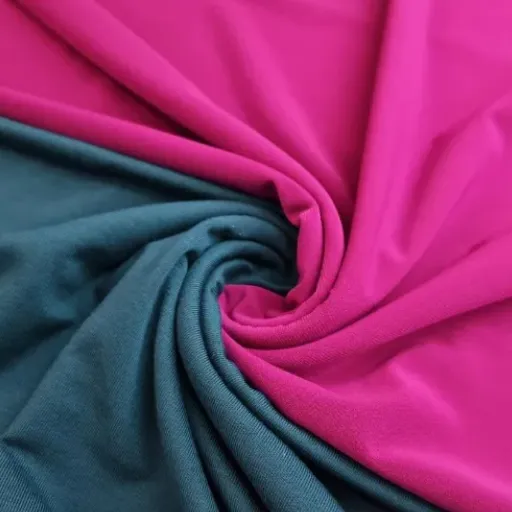
Recycling and Sustainability of Acrylic and Polyester
There are intricate complications with acrylic recycling, just as with polyester, primarily owing to their synthetic nature and the complexities involved in their manufacture. Polyester, more so than acrylics, is recycled, mainly through mechanical recycling, where the material is melted and reformed. There are also facilities for chemical recycling wherein polyester is chemically broken down into its raw monomers to be reconverted into fresh polyester. Nevertheless, both recycling methods offer huge energy demands; recycled polyester quality lowers through the duration of recycling operations, where it cannot be utilized for higher-standard applications but for lower rather than high-standard products.
Since acrylic is not accepted by most recycling programs, this material is much harder to recycle. The molecular setup of acrylic renders it difficult to decompose and convert into other uses in a very efficient way. Thus, in landfills and in microplastics, most acrylic waste is disposed of. Another point is that huge amounts of greenhouse gas emissions are made during the manufacture of acrylic, so it cannot stand from an environmental efficiency standpoint over polyester.
Sustainability Tip: For sustainability perspectives, keeping consumption of both fabrics to a minimum is likely to lead to lower environmental damage. Some measures could include using already existing materials, promoting recycled polyester, and carrying out research into more eco-friendly synthetic fabrics. Both the consumer and the manufacturer need to confront the environmental concerns raised by both acrylic and polyester, thereby requiring conscious choices and development in sustainable production technology.
Comparative Environmental Footprint
Polyester and acrylic cloths while both are synthetic pose considerable threats to the environment in some ways different from each other. It is polyester that originates from petroleum, and it is also said to be a high-energy production process, emitting greenhouse gases that bring about global warming. Because of its recycling potential, polyester is much recycled, and environmental damage can also be partly addressed by recycled fiber.
On the other hand, acrylic is petroleum-based but less commonly recycled. Its manufacturing emits significant greenhouse gases and releases toxic chemicals into the environment. During washing, microplastic from acrylic fiber goes into the waterways, creating a big reservoir of pollution from which it will be hard to clear.
Polyester tends to take a more sustainable edge when it is recycled and produced with less chemical toxicity. However, both fabrics carry massive environmental footprints, so reducing synthetic fibre production needs to be a larger step towards decreasing environmental degradation.
Future Trends in Synthetic Fabric Production
Production of synthetic fabric is now considered to be shifting to sustainable and eco-friendly avenues. A well-known trend has been working towards recycling materials such as post-consumer plastics in making fabrics like recycled polyester. These options avoid the use of virgin resources while diverting wastes from landfills and oceans. Recycling efforts have also made it possible to recycle with less energy, thus reducing the environmental impact.
Another trend is biodegradable synthetic fabrics. Researchers are investigating alternatives that will act in much the same functional manner as traditional synthetics; however, these degrade better in the environment. These innovations will focus on the problems from microplastics and other pollutants caused by synthetic fibers.
Green chemistry is an evolving and continuing field that allows companies to use greener chemistry, such as less toxic chemicals during production. This means fewer harmful emissions and wastes but also ensures that industries provide safer working environments for their employees. All of these trends, therefore, together with calls for transparency and certification standards, herald a future of more ethical and responsible production in the synthetic fabric industry.
Frequently Asked Questions (FAQ)
Q: What is the difference between polyester and acrylic?
A: The principal difference between polyester and acrylic lies in their chemical composition and properties. Polyester is a polyethylene terephthalate synthesized from petroleum-based fossil fuel, whereas acrylics are usually made of polyacrylonitrile. Polyester gets its reputation for durability and resistance to wrinkling, while acrylics are known for their softness and warmth and, therefore, preferred in yarns and knitting textiles.
Q: Which is better for outdoor fabrics, acrylic or polyester?
A: Generally, polyester would be the better choice for outdoor use because of its durability and resistance to UV rays and moisture. Acrylic fabrics also have most of their benefits, though: colorfastness and quick-dry capability can make them suitable under some outdoor conditions.
Q: Are acrylic and polyester suitable in hot weather?
A: Hot weather might not be favorable for wearing acrylic or polyester: synthetic fibers that trap heat. Though polyester can wick moisture and dry quickly, acrylic is always warmer to the touch.
Q: What are the more important distinguishing characteristics between acrylic and natural fibers such as cotton?
A: Acrylic fiber processes are developed to resemble natural fibers like cotton, but these are chemically synthetic in nature unlike cotton. While the latter works as a breathable barrier in the absorption of moisture from the skin, acrylics are light and brighter in color because of their dyeing capability. However, natural fibers such as cotton may be more comfortable to wear during the very hot weather than acrylic.
Q: Does acrylic yarn make a good knitting yarn?
A: Yes, being cheap and available in many colors, acrylic yarns are a good option for knitting. Also, it is less inclined to pilling when compared to some natural fibers, thus lending itself to many types of projects. However, those who wish for the luxury may opt for a natural fiber such as wool or cotton.
Q: How does the tensile strength of polyester compare with that of acrylic?
A: In general, polyester has a greater tensile strength than acrylic and is, therefore, more resistant to wear and tear. Durability is a key factor in choosing polyester of items that need to last, such as home textiles and outdoor fabrics.
Q: What do I have to keep in mind for choosing the right fabric for my project?
A: In choosing the fabric, consider the intended use of the fabric, its comfort, and whether or not it is resilient and can be taken care of. For outdoor purposes, polyester could be a good option, while acrylic would better fit a cozy item such as a blanket or sweater. Other things to keep in mind are factors such as if the fabric would be waterproof or if it would resist any abrasions.
Q: Are synthetic materials, like acrylic and polyester, ecosphere?
A: From a synthetic standpoint, materials like acrylic and polyester do contribute to greenhouse gases during their production and worry in their derivation from fossil fuels. They offer versatility and benefits of performance, but then one must think about their impact on eco environment. Perhaps natural fibers or recycled synthetic alternatives would be a better eco-friendly consideration.
Q: What is the technical difference when different heat settings are applied to acrylic and polyester fabrics?
A: In caring for acrylics and polyesters, use particular heat settings. High temperatures cause damage to acrylics by melting or deforming them. Polyesters can stand moderate heat but may also be damaged by too high temperatures. Always refer to care labels for best practices to maintain the integrity of the fabric.
References
- Two Common Fabrics, Acrylic Vs Polyester – A detailed comparison of the properties and uses of acrylic and polyester.
- The Key Differences Between Acrylic and Polyester – A blog explaining the durability, applications, and characteristics of both materials.
- What is the Difference Between Polyester and Acrylic? – A discussion on the fundamental differences in the polymers and properties of these synthetic fibers.
- Cotton vs Polyester / Wool vs Acrylic – The War of Fibres – A broader look at synthetic fibers, including polyester and acrylic, and their environmental impact.
- Acrylic vs. Polyester Marine Grade: What You Need to Know – A comparison of acrylic and polyester in marine-grade applications, highlighting their strengths and weaknesses.








